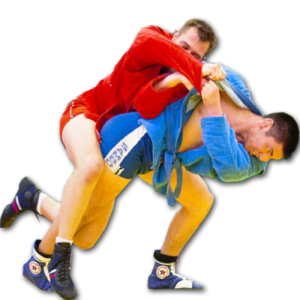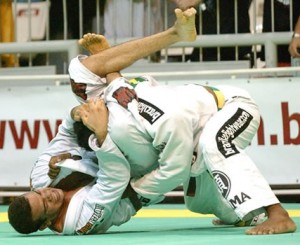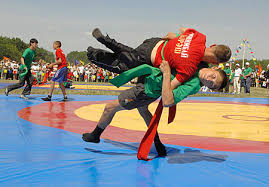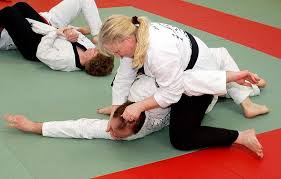Ashihara-karate
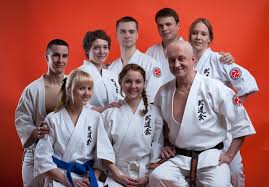 Ashihara-karate uses scientific logic based on natural rationalism and the elimination of all unnecessary things. Traditional karate focuses on a specific technique or solely on strength. Today in society, the “real” form of karate is more necessary, where speed, strength, wit and strategy are combined.
Ashihara-karate uses scientific logic based on natural rationalism and the elimination of all unnecessary things. Traditional karate focuses on a specific technique or solely on strength. Today in society, the “real” form of karate is more necessary, where speed, strength, wit and strategy are combined.
Ashihara-karate is also trying to create a special development environment for its students. If this goal is achieved, then each student has a place where he can train and improve his level.
The style of Ashihara-karate fulfilled this requirement and continues to improve the conditions, trying to bring them closer to real life, that is, to create a “true battlefield.” In a few words, this is the most realistic style of karate. It is important to teach a person to avoid enemy attacks, and, conversely, to manage and even limit him, which is more profitable and effective.
Ashihara-karate seeks to train instructors so that the result is achieved in various ways, depending on your age and physical condition. Not all trainees will become professionals, so it is important that the instructors never forget to be flexible, individually approach each student. This style teaches to avoid enemy attacks; Ashihara-karate is supposed to be a “cunning” style!
It is assumed that the student must always improve and achieve such a level that even if he is defeated by a stronger opponent, he should not stop in his development, but try to become more technical and experienced. Do not be satisfied with the achieved level of skill, but strive in your studies for a more real karate technique. Always be one step ahead of your rivals.
This is all that Kancho Ashihara wanted to convey to his followers.
Ashihara karate today
After the death of Kancho Ashihara, his son, Hidenori Ashihara, led NIKO. Hidenori Ashihara is today our second Kancho to lead a developing organization that now consists of 250 branches representing 35 countries spanning all continents.
Each dojo around the world has direct contact with Honbu in the city of Matsuyama, and each Branch Chief (department head) is responsible for the dojo that he represents.
Since 1994, the Ashihara Karate World Championship has been held: Sabaki Challenge Spirit. The Fourth World Cup, which was held in Denmark in 1997, was first visited by Kancho Ashihara.
Technical aspects:
Technical aspects of Ashihara karate are formed around 6 main areas:
• basics.
• four movements.
• position.
• sabaki (movement technique)
• Kata Ashihara-karate.
• Realistic approaches to the fight.
These areas reflect the technical nature of Ashihara karate.
Ashihara-karate is based on 21 techniques. The student must strive for the perfection of these techniques in order to overcome obstacles, which is why Ashihara-karate is also called “fighting karate.”
Four movements are the most obvious for Ashihara karate. The ideology of moving around your opponent gives you more opportunities, because Ashihara-karate can be applied to the strongest of the opponents.
Position is a direct consequence of one of the four movements. When using four movements to get around your opponent, you move to different positions.
Sabaki is a difficult concept. The closest term conveying its essence is probably “partner control.” It gives an advantage in controlling the enemy to an even weaker fighter. In Ashihara karate, sabaki plays a significant role, allowing a person of any physique, strength or growth to benefit from training.
Kata Ashihara-karate are based mainly on the control of technology. The kata are applicable to a real combat situation, which makes them unique among the kata of other karate styles. Only six types of kata:
• Initial kata – Shoshinsha no kata.
• Basic kata – Kihon no kata.
• Throwing kata – Nage no kata.
• Sparring kata – Kumite no kata.
• Combat kata – Jissen no kata.
• Self defense kata – Goshin no kata.
All kata are divided into three levels: short, medium and long.
The idea of creating such an amount of kata is that they can be comprehended step by step as the requirements are difficult. Kata can be used to practice combinations alone or with a partner as a training in control techniques.
Realistic approaches to fighting distinguish Ashihara-karate from standard practice. In a real fight, you should strive for victory, to reduce the possibility of damage. We strive to achieve the rational execution of work from our body, and work to improve our speed, methods and strength.
Ashihara karate is very different from traditional karate methods. Obviously, in a duel where both fighters simply collide their foreheads, not even trying to block attacks, the stronger one will win. Too many karate styles, like this, do not pay due attention to protection. This might be acceptable earlier, but today we need a more realistic approach to the fight.
